|
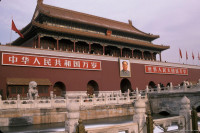
Taken from Tiananmen Square outside the Forbidden City at Meridian Gate which was built in 1420 -- picture of Mao on the gate.
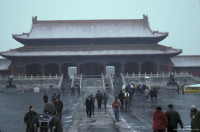
Gate of Supreme Harmony or front gate of the outer court was constructed during the reign of Emperor Yongle (1403-1424) of the Ming Dynasty.
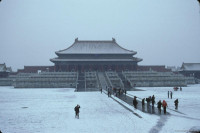
Hall of Supreme Harmony or Throne Room was used during the Ming and Qing Dynasties for important events such as weddings.
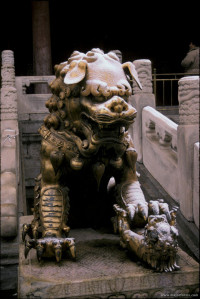
The gilded Chinese Guardian Lion of the Qing era in front of the Palace of Tranquil Longevity with a lion cub under her left paw.
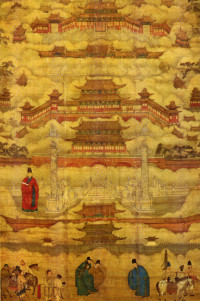
In the heart of Beijing, China is the ancient Forbidden City; home to the Chinese Emperors for half of a millennium.
From the Ming dynasty to the end of the Qing dynasty the Forbidden City was not only the Chinese leader’s home, but it was the center of the Chinese government and political affairs. This was a place for great ceremonies and cultural events. The name ”Zijincheng” or Forbidden City was referred to as such because no one was permitted to enter or leave the Forbidden City without the permission of the emperor. It was built from 1406 to 1420. Encompassing 980 buildings, this is the world’s largest collection of preserved ancient wooden structures as listed by UNESCO. The palace is an icon of Chinese palatial architecture which made a cultural impact across East Asia.
The city is surrounded by a 26 ft. wall (7.9 m) and a 20 ft. (6 m) deep by 171 ft. (52 m) wide moat. The wall is 28.3 ft. (8.62 m) thick at the base. This served to protect the Inner and Outer courts which lay inside. The Inner court was the residence of the Emperor and the Outer Court was used for ceremonies.
Several religions were represented by temples and shrines throughout the Forbidden City. Shamanist, Taoist, and Buddhism were among the most prevalent. The design, color, and details of the city were carefully planned to represent religious symbols. Visitors can view religious shines in the imperial gardens that surround the City on three sides.
Today the palace serves as a museum with artifacts starting with collections from the Ming and Qing dynasty. The Palace has been used in this capacity since 1925, and the name has evolved to “gugong” meaning “Former Palace”.
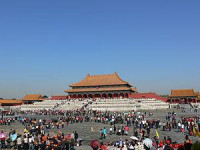
The Forbidden City was the Chinese imperial palace from the Ming Dynasty to the end of the Qing Dynasty. It is located in the middle of Beijing, China, and now houses the Palace Museum. For almost 500 years, it served as the home of emperors and their households, as well as the ceremonial and political center of Chinese government.






 Please share your ideas with us.
Please share your ideas with us.